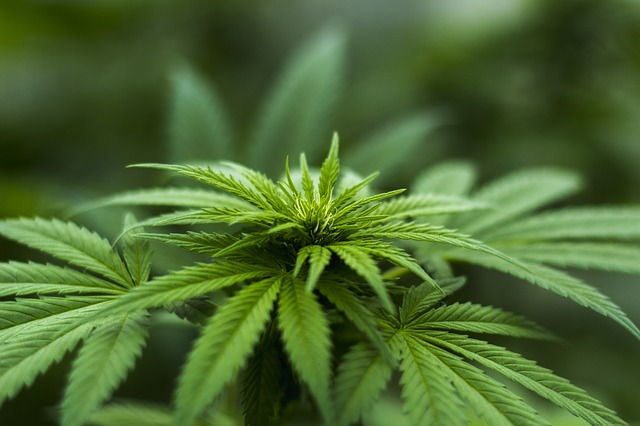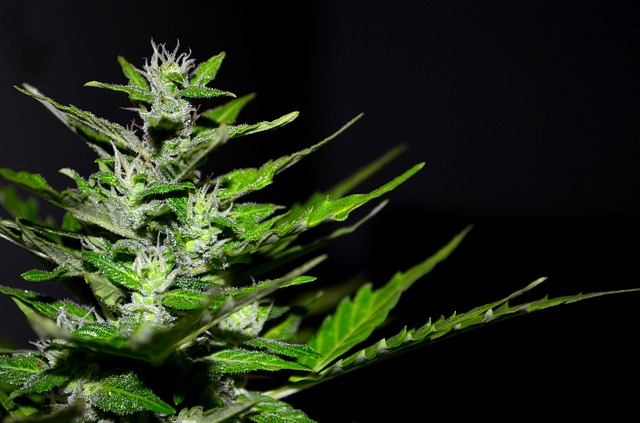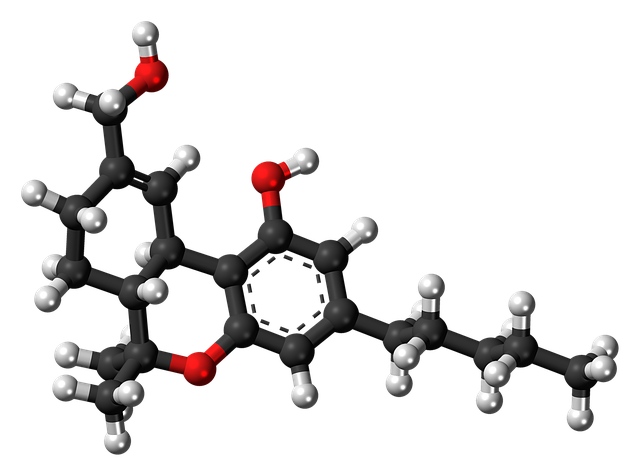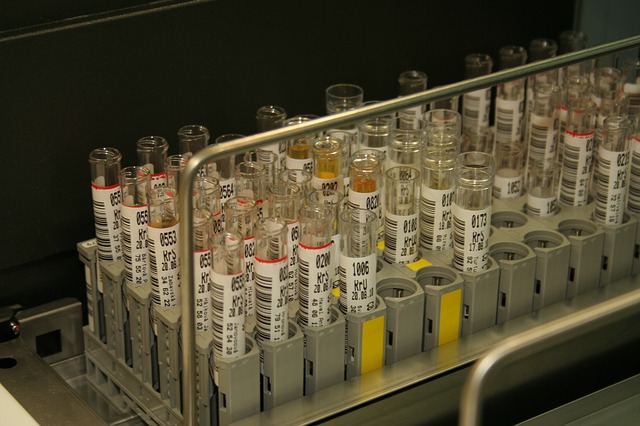QUALITATIVE DETERMINATION OF MARIJUANA BY IMMUNOASSAY IN URINE SAMPLES.

Source

The main objective of this post is to contribute to the dissemination of scientific knowledge, as is common in the scientific communities in the area of Toxicology and Drug Control, addressing, in this case, the basic fundamentals related to the qualitative determination of marijuana in human urine by the immunoassay technique, as a valid option that (carried out by specialized personnel), contributes with the suspected clinical diagnosis in case of possible marijuana intoxication.
Generalities about Marijuana
Marijuana: How is it? How is it consumed? What is its effect on the organism?
Before starting, it is important to know a little more about Marijuana commonly known as "herb", "porro", "Maria Juana", and hundreds of names that change according to popular slang, the nation and culture.
1.-How is it?
Marijuana is phylogenetically known as Cannabis sativa, thanks to the classification of Linneo, Source and it is a plant that comes from From Central Asia with macroscopic characteristics such as tall stem and gray-green leaves, from the microscopic point of view are botanical structures such as cystolic hairs, glandular hairs, hemp seeds or resin.

Source
2.- How is it consumed and what are its effects on the body?
From the medicinal point of view, marijuana is used in many ways, from taken in a simple tea to avoid insomnia or the emetic effects of chemotherapy (avoiding vomiting) to inhaled, smoked or placed directly as dressings to reduce pain rheumatic, can be used against glaucoma, as well as as an appetite stimulant in patients with AIDS, it is also produced commercially by the pharmaceutical industry for use in pediatric patients with different neurological conditions such as recurrent seizures.
On the other hand cases of accidental poisoning by Cannabis sativa have been reported in children who tasted cakes prepared with this drug. Source

Source
 Source
Source
Source

Source
As reported by Wikipedia Source, the main psychoactive ingredient in marijuana is delta-9-tetrahydrocannabinol, or THC, sometimes called delta-9-THC under a different denomination system. In any case, other cannabinoids also have medicinal and / or psychoactive properties. It is found in a greater proportion in the hemp or fruit of the cannabis sativa plant, from which more than 400 types of cannabinoids have been isolated. The three-dimensional structure of the TCH is shown below, for a better visualization of the molecule.

Source
Immunoassay technique for the identification of Marijuana:
It is a rapid, qualitative one-step chromatographic immunoassay for the detection of tetrahydrocannabinol in a urine sample. This method has been developed for the determination of THC in urine for concentrations higher than 50 ng / ml.
Beginning:
The test consists of an absorbent chromatography in which the drug or its metabolites in the sample compete with a conjugate of the drug immobilized in the porous membrane in the free sites of the antibody. As the sample rises through the absorbent device, the conjugated antibodies bind at the drug-free sites forming an Ag-Ac complex (antigen-antibody). In accordance with the studies carried out by the National Institute on Drug Abuse.
Source
This complex competes with the immobilized conjugate of the antigen in the positive reaction zone (T). The conjugates not bound with the reagent in the control zone (C), produce a pink band, indicating that the device functions correctly. If the level of detection of the drug is less than 50 ng / ml, the two pink bands are formed, one in the control zone and another in the test zone, otherwise only one band appears in the control zone.
Materials :
To carry out this practice, the kit for the determination of drugs of abuse (THC) is required, which can be in a cassette or strip (depending on the commercial presentation), a dropper and the urine sample taken in a plastic container sterile.
Process:
Balance the test components with the ambient temperature before performing the test.
Remove the test device, place it on a flat surface and fill the dropper with the urine sample and disperse three drops on the plate.
When they are strips, they are immersed inside the urine sample.
Wait until the pink line (s) appears. The result should be read at 5 min

Source
Results analysis:
Positive:
Only one pink band appears in the control area (C). A positive result indicates that THC levels are above the concentration detection level (50 ng / ml).
Negative:
Two pink bands appear; one in the control zone (C) and the other in the test zone (T). A negative result indicates that the THC levels are below the concentration detection level (50 ng / ml).
Invalid:
When no visible bands appear in any area, or when there is a visible band in the test area but not in the control zone. This indicates that the test is invalid and it is recommended to repeat it.

Some considerations:
The use of drugs is a topic of great importance from the clinical point of view, even more when the development of the consumers can alter (either in a beneficial way) their quality of life, likewise it must be taken into account that the abuse, It can be accompanied by a series of symptoms characteristic of the type of poisoning, which correlates with reliable and timely laboratory tests can help diagnosis and treatment.
It is important to emphasize that the determination of THC in urine by immunoassay is a reliable qualitative technique and of routine use in laboratories of Clinical Toxicology, due to the great advantage represented by the ease of obtaining the urine sample (in comparison with other methods of collection of biological samples) can be processed quickly, however it is recommended that "a posteriori" these results can be confirmed with even more specific quantitative tests, especially due to the clinical and legal implications that may have on the patient's life.
References:
Albert, L. (1997). Introducción A La Toxicología Ambiental. México: Centro. Panamericano De Ecología Humana Y Salud.
Barnett, G.; Licko, V.; And Thompson, T. Behavioral Pharmacokinetics of Marijuana. Psychopharmacology 85:51-56, 1985.
Cordova, D. Toxicología, Editorial ed. Manual Moderno, Cuarta edición. Colombia 2001.
Hawks RL, Chiang CN., Eds. Urine Testing For Drugs Of Abuse. Rockville: Departament Of
Health And Human Services, National Institute On Drug Abuse, 1986.
Klaassen, c. D. (2005).- Manual de Toxicología: La Ciencia Básica de los Tóxicos. Ed. Mcgraw-Hill interamericana:6ª ed. México
Mcbay AJ. Drug-Analysis Technology-Pitfalls and Problems of Drug Testing. Clin. Chem. 1987 Oct., 33(11 Suppl): 33B-40B.
National Institute On Drug Abuse,73 Research Monograph Series.
Repetto, M. (1995).- Toxicología avanzada. Ed. Díaz De Santos, S.A. Madrid.
Repetto, M. (1997).- Toxicología fundamental. Ed. Díaz De Santos, S.A. Madrid.
Urine Testing For. Drugs of Abuse. Editors: Richard L. Hawks, Ph.D. C. Nora Chiang, Ph.D. Division of Preclinical Research. National Institute on Drug Abuse.
Urine Testing For. Drugs Of Abuse. Editors: Richard L. Hawks, Ph.D. C. Nora Chiang, Ph.D. Division of Preclinical Research. National Institute on Drug Abuse.
https://upload.wikimedia.org/wikipedia/commons/f/f9/Cannabis_sativa_